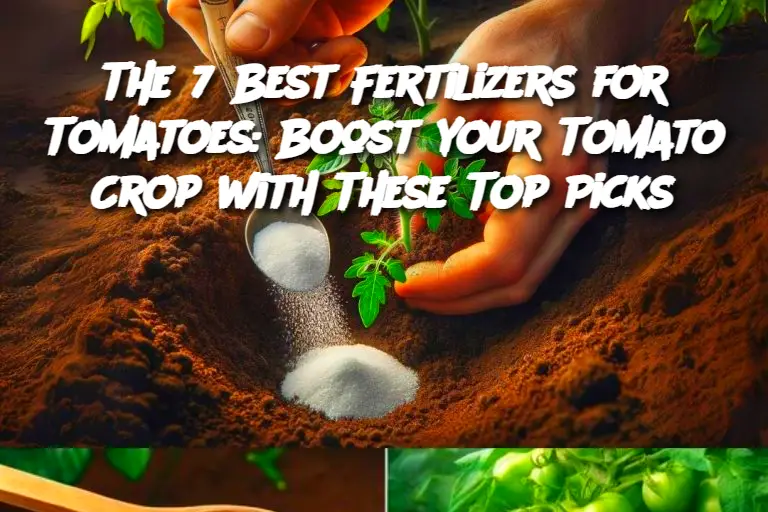ADVERTISEMENT
Introduction:
Tomatoes are a favorite in many gardens, offering a juicy, flavorful reward for all the time and effort spent caring for them. However, to truly unlock the potential of your tomato plants, the right fertilizers can make all the difference. The right nutrients can encourage robust growth, enhance fruit production, and improve overall plant health. Whether you're growing tomatoes in containers or planting them directly in the soil, choosing the right fertilizer is key to achieving a bumper crop. Here, we’ve curated a list of the 7 best fertilizers for your tomatoes, ensuring that your plants will grow like never before!
Ingredients (or Types of Fertilizers):
Compost
Rich in organic matter, compost provides a slow-release of nutrients and improves soil structure. It is ideal for supporting long-term tomato health.
Fish Emulsion
A liquid fertilizer made from fish, this product is high in nitrogen, which promotes strong leaf growth, making it excellent for tomato plants in their early stages.
Tomato-Specific Fertilizers
These are specially formulated for tomatoes, offering a balanced mix of nutrients that cater to tomatoes’ specific growth needs, including a higher level of potassium for fruiting.
Bone Meal
Bone meal is a great source of phosphorus, which promotes strong root development and helps with fruiting and flower production.
Blood Meal
Blood meal is a high-nitrogen fertilizer, which helps with leafy growth and encourages tomatoes to grow quickly and healthily.
Organic All-Purpose Fertilizers
These general fertilizers often have a balanced ratio of nitrogen, phosphorus, and potassium. They are great for tomatoes when you need an all-in-one solution.
Worm Castings
Worm castings are an excellent source of slow-released nutrients and beneficial microbes. They are great for enriching the soil and ensuring healthy, vigorous tomato plants.
Instructions for Using Fertilizers on Tomatoes:
Preparing Your Soil: Before planting, mix compost or organic matter into your soil to enrich it. This helps create a nutrient-rich environment that tomatoes thrive in.
Applying Fertilizers:
For slow-release fertilizers like bone meal and worm castings, mix them into the soil around your tomato plants at the time of planting.
For liquid fertilizers like fish emulsion, apply them to the soil around your tomatoes every 2-3 weeks during the growing season.
For tomato-specific fertilizers, follow the instructions on the package for the correct amount and frequency. Typically, applying a balanced fertilizer every 4-6 weeks works well.
Feeding During Growth:
During the growing season, monitor your plants for any signs of nutrient deficiencies. If you notice yellowing leaves (indicating nitrogen deficiency) or weak fruiting, you may need to adjust your fertilization strategy.
Watering: Always water your tomatoes thoroughly after applying any fertilizer to help nutrients reach the roots and prevent the risk of burning the plant.
Serving and Storage Tips:
Serving: Fresh, homegrown tomatoes are perfect for salads, sandwiches, and sauces. With the right fertilizer, you’ll see enhanced flavor, vibrant color, and firm texture.
Storage: Tomatoes are best stored at room temperature, away from direct sunlight. If you need to store them for a longer period, consider canning or freezing them.
Variations:
ADVERTISEMENT
